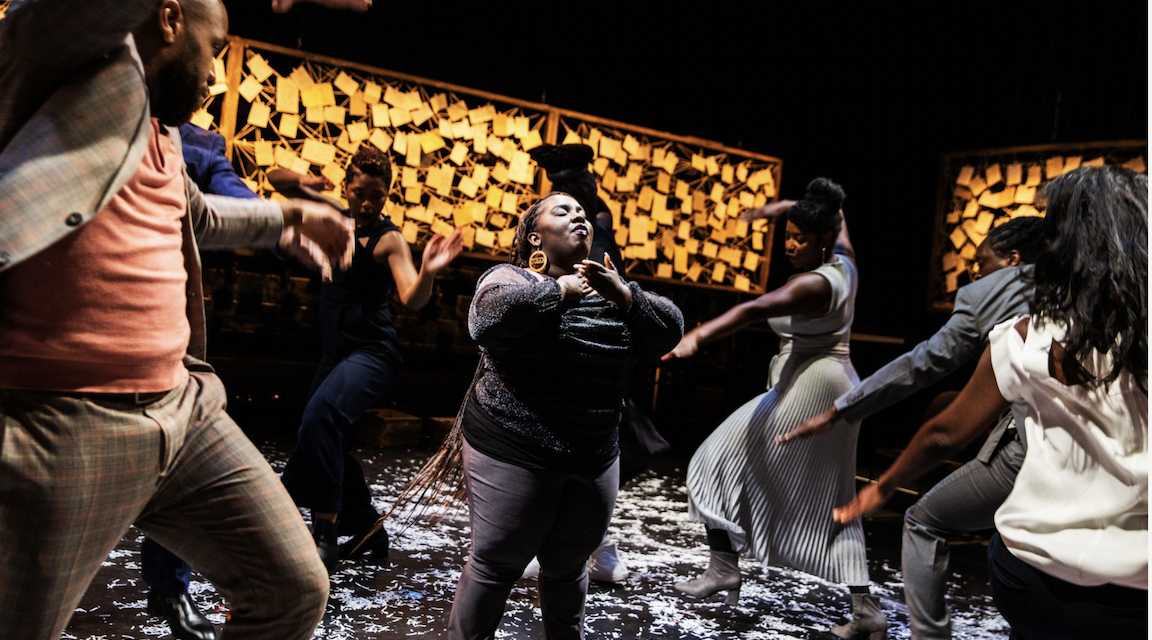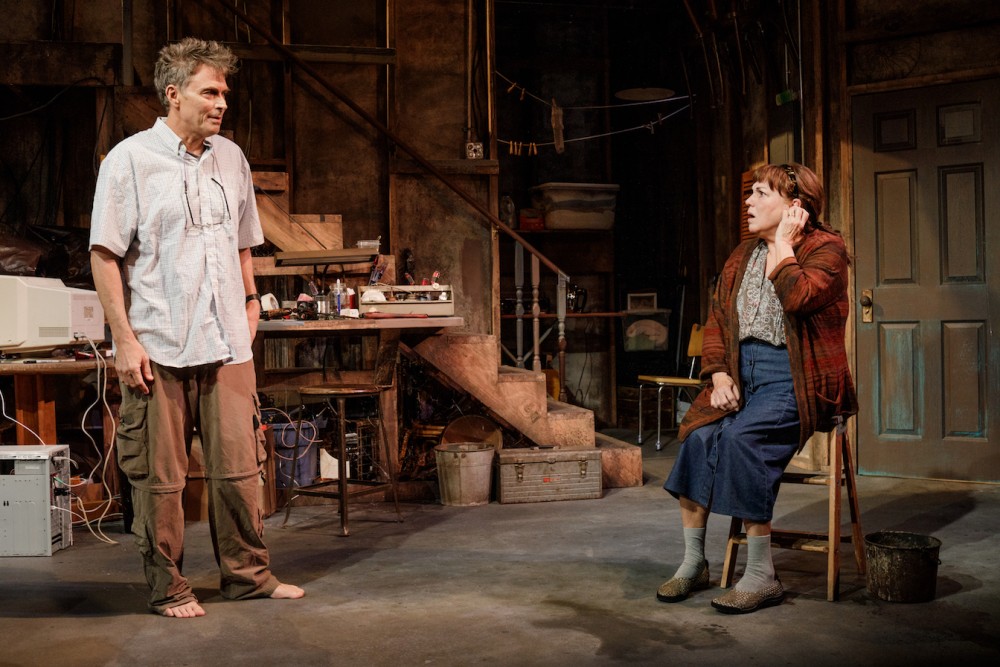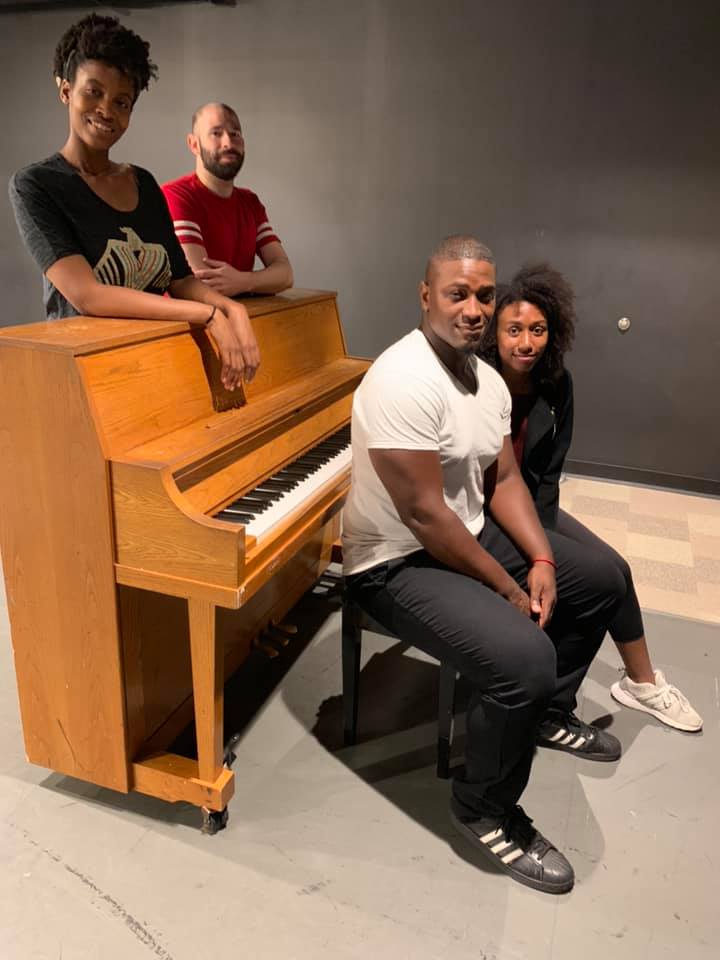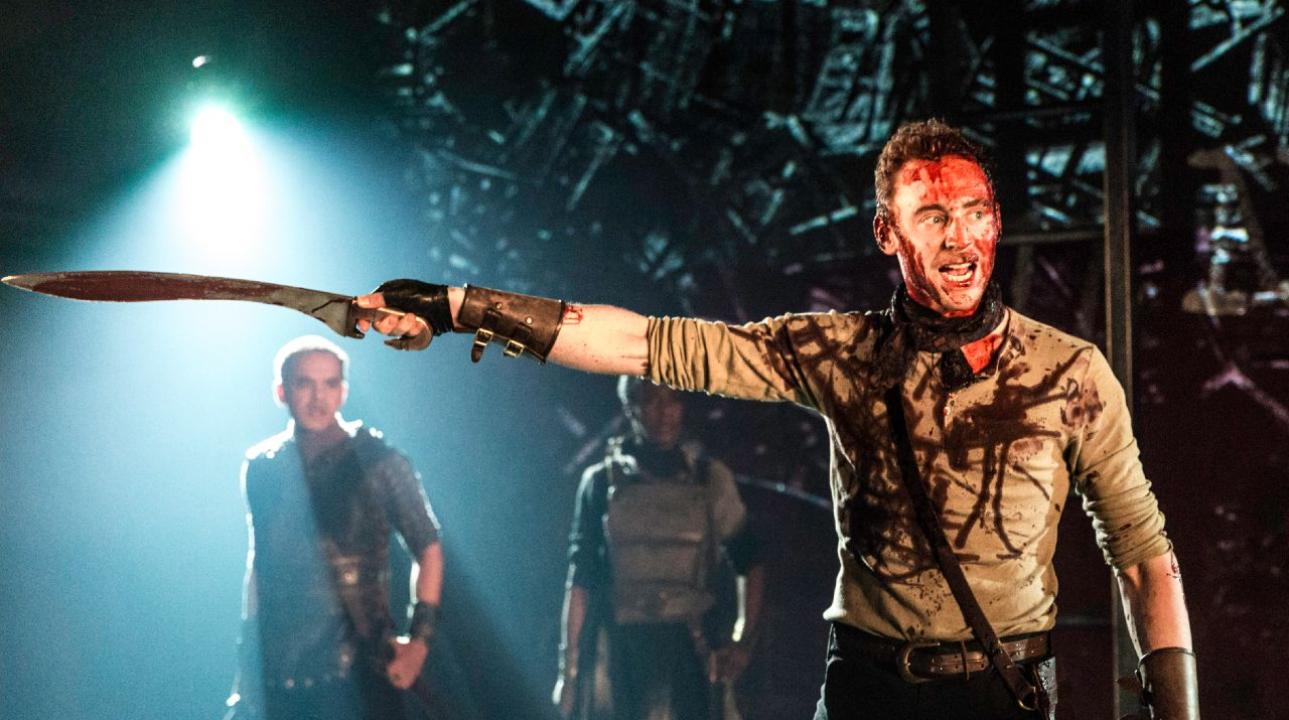By Carol Rocamora . . .
Recently, playwrights and producers are making audiences part of the show. A wave of immersive, site-specific theatre productions has captured the public’s attention over the past decade. One of the first notable ones was Punchdrunk Theatre Company’s Sleep No More (2011). A row of empty warehouses in the West 20s was transformed into the so-called McKittrick Hotel, where scenes from Macbeth were performed, while audience members (required to wear Venetian-style costume masks) wandered through the buildings, terrified and thrilled, unguided, unprepared for what scenes they’d encounter. (The production will return in 2022).
There there was Natasha and Pierre and the Comet of 1812, which began in a tented, make-shift cabaret in the meatpacking district in 2013. Audience members dined in a night-club style setting, while treated to Dave Malloy’s colorful musical version of a section of Tolstoy’s novel. A great success, it eventually moved to Broadway in 2016. Next there was Here Lies Love (2013), the Public Theater’s production of David Byrne’s musical about Ferdinand and Imelda Marcos, where the theatre was transformed into a disco, and spectators danced around raised platforms upon which the actor/singer/dancers performed. In 2014, audience members were divided into three sections in New York Theatre Workshop, to view three couples performing simultaneous scenes from Ivo van Hove’s adaptation of Scenes from a Marriage. Then, after a break, the audience returned to an emptied theatre space, where chairs were arranged in a circle around the three pairs, now performing as an ensemble.
During the slow emergence from the pandemic this past spring 2021, the imaginative playwright Simon Stephens devised a remarkable, therapeutic immersive experience. In Blindness, at the Daryl Roth Theatre, audience members were seated in socially distanced pairs in an empty auditorium, where a voice (of actress Juliet Stevenson) narrated the story of a town where everyone went blind. (There were no actors). After a frightening hour of total darkness (designed to simulate the experience of the play’s title), suddenly the huge doors of the auditorium facing Union Square opened, and light flooded into the darkened space, thrilling a transported, liberated audience.
However, as Arthur Miller said, attention must also be paid to new productions that are asking the audience to participate in a traditional theatre setting – but in non-traditional ways. Their reasons are not for entertainment – but rather for enlightenment, and their agenda, set in the time of the Black Lives Matter movement, is urgent. Before the pandemic, in Jackie Sibblies Drury’s Fairview (first at Soho Rep in 2018, then at TFANA in 2019), an all-Black cast shocked the mostly white audience by asking them to switch places, inviting them to come up onto the stage for the final moments of the play, while the actors continued to speak out from the audience about what it means to be “observed” in a racist society.
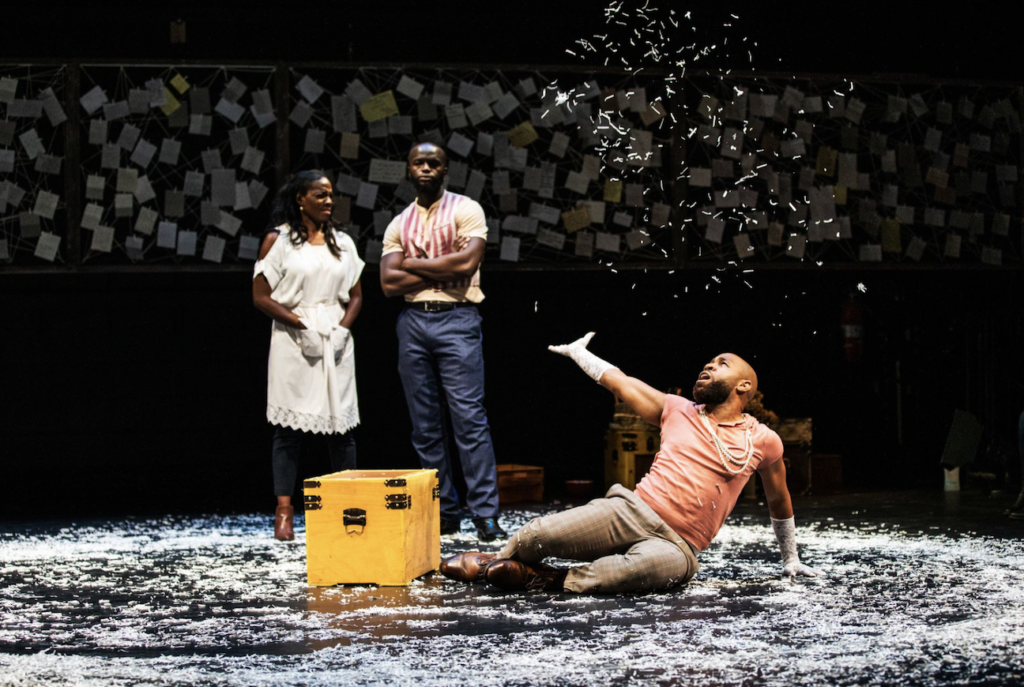
Now, in Aleshea Harris’s What To Send Up When It Goes Down at Playwrights Horizons, directed by Whitney White, members of the 8-member ensemble are asking audiences to be full participants in an evening to commemorate those killed by police over the past decade in America. The show begins in the lobby, where the audience members are led up the stairs and into the auditorium where the actors will perform on the floor, surrounded by audience seated on three of the four sides. Once in the performance space, we are asked to form a circle, and give our first names. The cast then leads us in a series of shared rituals. We’re asked to repeat the name of Rekia Boyd 22 times, one for each of her years (before she was shot by a Chicago police detective in 2012). We are taught a song, and then asked to sing it together with the cast. Paper and pencils are circulated, so that we may write a message of recognition, respect and empathy for Black Americans who are victims of a racist society. These slips of paper will eventually be pinned up on the wall around the auditorium, along with hundreds of others written by previous audience members.
What To Send Up evolves into an shared requiem for this brave bold company to be assured that we will not forget these moments with them in the theatre.
What To Send Up When It Goes Down by Aleshea Harris, directed by Whitney White, now playing at Playwrights Horizons (316 West 42 Street, NYC) through October 17.
Photos: Marc J. Franklin


